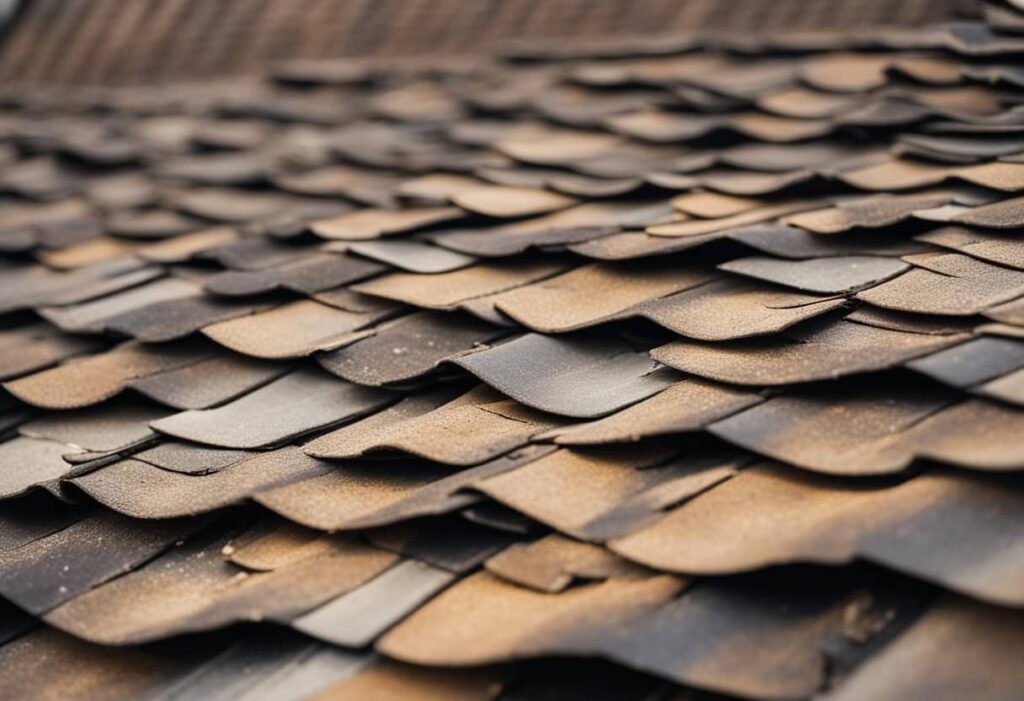Determining if a roof is in poor condition involves recognizing specific signs of damage that can be easy to overlook. Cracked, torn, or missing shingles, water leaks, and sagging areas are clear indicators of a deteriorating roof. Regular visual inspections can reveal common issues such as rusted nails, exposed seams, and clogged roof vents. Let’s find out how to tell if a roof is bad?

To prevent more severe problems, look out for curled shingles, which suggest that the material is deteriorating, and possible issues with attic ventilation. Recognizing these warning signs early can help homeowners address minor repairs before they escalate into major structural damage.
Beyond these visual cues, be mindful of damage caused by extreme weather conditions, such as heavy rains, high winds, or hail, which can further compromise the roof’s integrity. With these insights, homeowners can take proactive steps to maintain their roofs and extend their lifespans.
Identifying Roof Damage

Several signs can indicate roof damage, both from the inside and the outside of your home. Key indicators include leaks, damaged shingles, and visible structural problems.
Interior Signs of Damage
Water Stains on Ceilings and Walls: Discolored patches, bubbling paint, or peeling wallpaper can suggest leaks that may originate from compromised shingles or structural issues.
Mold and Mildew Growth: An unusual presence of mold or mildew in the attic or upper floors can suggest leaks from a damaged roof, leading to moisture buildup.
Sagging Ceiling: A sagging ceiling can point to severe water damage from persistent roof leaks needing immediate attention.
Unusual Odors: Musty smells inside your home could indicate mold or mildew growth resulting from roof leaks, signaling possible roof damage.
Exterior Inspection Tips
Missing or Damaged Shingles: Look for shingles that are cracked, torn, warped, or missing. Inspect areas like the valleys, chimneys, and skylights closely.
Damaged Flashing: Check the flashing around chimneys, skylights, and other roof penetrations for signs of wear or damage, which can lead to leaks.
Sagging Rooflines: Note areas of the roof that sag or appear unsound. This might indicate structural damage needing professional inspection.
Rusty or Popped Nails: Observe for rusted or popped nails on the roof, as these can be entry points for moisture.
Blocked Roof Vents: Ensure roof vents are clear and unclogged to prevent moisture buildup and potential roof damage.
How To Tell If A Roof Is Bad? Warning Signsr

Understanding the key indicators of roof failure is crucial for maintaining the longevity and safety of your home. Warning signs include visible wear and tear, as well as more subtle hidden dangers that might not be evident at first glance.
Visible Wear and Tear
Granules in Gutters: Finding granules in your gutters suggests shingles are deteriorating. As shingles lose their granules, they become more vulnerable to sun damage and leaks.
Curling Shingles: Shingles that are curling or buckling indicate the roof is nearing the end of its lifespan. This can result from exposure to harsh weather or improper attic ventilation.
Sagging Roof: A roof that appears to sag or droop needs immediate attention. This could be due to structural issues, water damage, or excessive weight from snow and ice.
Damaged or Missing Shingles: Shingles that are cracked, broken, or missing signify that the roof can no longer effectively protect against the elements. This can lead to leaks and further damage if not addressed promptly.
Hidden Dangers
Leaky Ceilings: Water stains on ceilings or walls are clear signs of a roof leak. These stains can appear as discolored patches, bubbling paint, or peeling wallpaper, indicating damaged or missing shingles.
Water Pooling in Attic: Water pooling in the attic is a significant red flag. It could point to a leak or inadequate roof drainage system, both of which need urgent repair.
Inadequate Ventilation: Poor attic ventilation can cause moisture buildup, leading to mold growth, wood rot, and shingle damage. Ensuring proper ventilation is critical to avoid these problems.
Rotting Wood: The presence of rotting wood in your attic or under your roof indicates prolonged water exposure, which compromises the structural integrity of your home.
Addressing these signs promptly can prevent further damage and potentially save you from more costly repairs down the line. Knowing what to look for helps in making informed decisions about roof maintenance and replacement.
Roof Lifespan and Replacement

Understanding when you might need to replace your roof is crucial for homeowners. Several factors influence the lifespan of a roof, and financial considerations also play a significant role in decision-making.
Understanding Roof Lifespan
The average lifespan of a roof depends largely on the materials used. Asphalt shingles, the most common roofing material, usually last for about 20 to 25 years. Metal roofs can last between 40 to 70 years, depending on the thickness of the metal. Wooden roofs have shorter lifespans, typically around 20 to 30 years, though they require more maintenance due to susceptibility to issues like mold and termites.
Older roofs demand more frequent inspections. It is recommended to conduct inspections twice a year, especially for roofs that are close to their expected lifespan. Signs that a roof may need replacement include curling or missing shingles, bald spots where granules are missing, and visible wear or damage like dents from hail.
Financial Considerations
Replacing a roof can be a significant investment. Homeowners worried about costs should consider the long-term benefits of newer, more durable materials. While asphalt shingles are more affordable, materials like metal and tile offer greater longevity, which can lead to savings over time due to reduced maintenance and replacement costs.
For those who need a new roof but can’t afford it, there are often financing options available, including home improvement loans and roofing company financing plans. Some energy-efficient roofing materials might also qualify for tax credits, providing further financial relief.
To maximize the lifespan and performance of a roof, regular maintenance and timely repairs are critical. Proactive steps can help avoid the high costs associated with major damages and premature replacement.
Rabbit Roofing – Best Roofers in Tampa Bay, Florida
Rabbit Roofing stands out as the best roofing contractor in Tampa due to our unwavering commitment to quality and customer satisfaction. Specializing in roof repair services, including emergency roof repair, we ensure your home is protected from unexpected damage. Our experienced team is equipped to handle everything from minor leaks to extensive repairs, providing prompt and reliable solutions like roof replacement for every type of roof whether it is a metal roof or tile roof. With locally manufactured high-quality materials and comprehensive warranties, Rabbit Roofing offers peace of mind and exceptional service, making us the go-to choice for all your roofing needs in Tampa and West Central Florida including Hillsboro.

